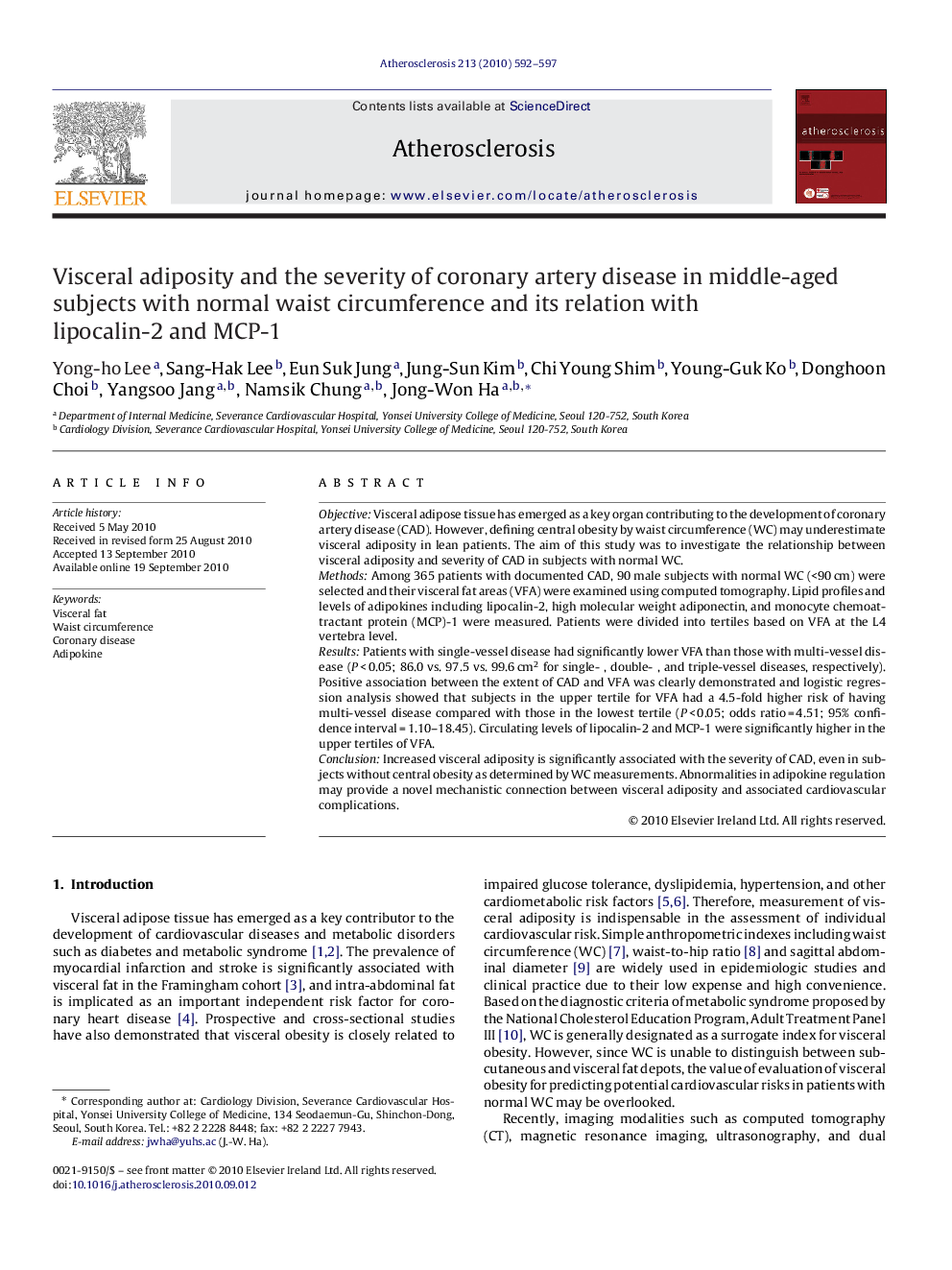| Article ID | Journal | Published Year | Pages | File Type |
|---|---|---|---|---|
| 2892963 | Atherosclerosis | 2010 | 6 Pages |
ObjectiveVisceral adipose tissue has emerged as a key organ contributing to the development of coronary artery disease (CAD). However, defining central obesity by waist circumference (WC) may underestimate visceral adiposity in lean patients. The aim of this study was to investigate the relationship between visceral adiposity and severity of CAD in subjects with normal WC.MethodsAmong 365 patients with documented CAD, 90 male subjects with normal WC (<90 cm) were selected and their visceral fat areas (VFA) were examined using computed tomography. Lipid profiles and levels of adipokines including lipocalin-2, high molecular weight adiponectin, and monocyte chemoattractant protein (MCP)-1 were measured. Patients were divided into tertiles based on VFA at the L4 vertebra level.ResultsPatients with single-vessel disease had significantly lower VFA than those with multi-vessel disease (P < 0.05; 86.0 vs. 97.5 vs. 99.6 cm2 for single- , double- , and triple-vessel diseases, respectively). Positive association between the extent of CAD and VFA was clearly demonstrated and logistic regression analysis showed that subjects in the upper tertile for VFA had a 4.5-fold higher risk of having multi-vessel disease compared with those in the lowest tertile (P < 0.05; odds ratio = 4.51; 95% confidence interval = 1.10–18.45). Circulating levels of lipocalin-2 and MCP-1 were significantly higher in the upper tertiles of VFA.ConclusionIncreased visceral adiposity is significantly associated with the severity of CAD, even in subjects without central obesity as determined by WC measurements. Abnormalities in adipokine regulation may provide a novel mechanistic connection between visceral adiposity and associated cardiovascular complications.
